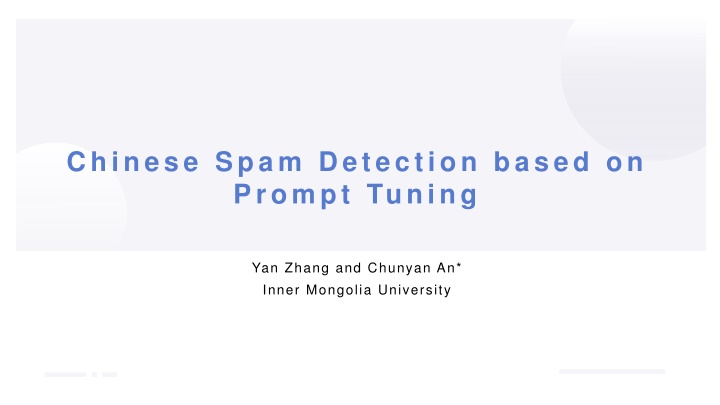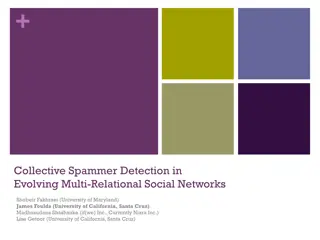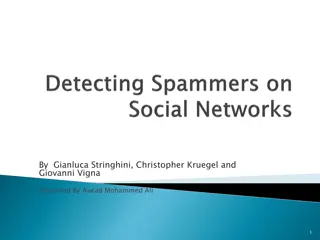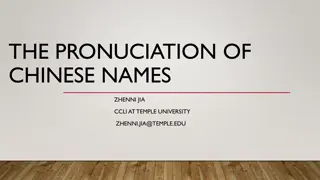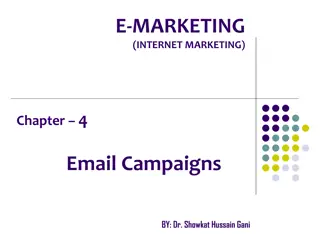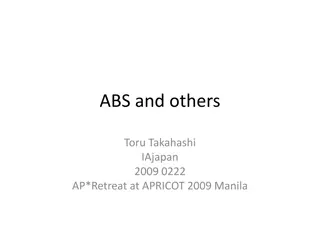Chinese Spam Detection Based on Prompt Tuning: Enhancing Email Security
Our research focuses on utilizing prompt tuning methods to improve Chinese spam detection in emails, combating the rising threat of spam emails affecting daily life. By fine-tuning pre-trained language models and designing effective prompt templates, we aim to enhance the accuracy and efficiency of spam detection to safeguard users from potential cyber threats.
Download Presentation

Please find below an Image/Link to download the presentation.
The content on the website is provided AS IS for your information and personal use only. It may not be sold, licensed, or shared on other websites without obtaining consent from the author.If you encounter any issues during the download, it is possible that the publisher has removed the file from their server.
You are allowed to download the files provided on this website for personal or commercial use, subject to the condition that they are used lawfully. All files are the property of their respective owners.
The content on the website is provided AS IS for your information and personal use only. It may not be sold, licensed, or shared on other websites without obtaining consent from the author.
E N D
Presentation Transcript
Chinese Spam Detection based on Prompt Tuning Yan Zhang and Chunyan An* Inner Mongolia University
Contents Introduction Our Approach Experiments Conclusion
Introduction According to the spam and phishing reports in 2021 released by Kaspersky, 45.56% of e-mails are spam. A large number of spam will affect people s daily life, and even cause property damage. The goal of our research is to detect spam according to the email text. This is a classic task, current mainstream spam detection methods are based on machine learning (ML) and deep learning (DL) techniques. The features of emails are learned through sample data to classify emails. How to obtain accurate text features has a huge impact on model performance, and the pre-trained language models (PLM) that have appeared in recent years have effectively solved this problem.
Introduction Fig 1 shows the practice of previous work. The approach is to fine-tune PLM through the task target dataset to make it suitable for downstream tasks. However, an important problem is that the target task of the initial training of PLM is a cloze task , and the downstream task is a classification task, which will cause the model fail to fully utilize the knowledge in the PLM. Fig 1. fine-tuning PLM to detect spam.
Introduction In recent years, a new paradigm called prompt tuning has achieved satisfactory results in NLP tasks. As shown in Fig 2. It does not directly classify through the features of the text but designs prompt templates to convert downstream tasks into similar to the initial training of PLM, let PLM directly complete the cloze task, making more efficient use of the rich knowledge in PLM. Fig 2. Pre-trained language model training process (a), and two paradigms of fine-tuning (b) and prompt tuning (c).
Introduction Special challenge: In order to evade detection, spam will use various methods to disguise as normal emails, and even express friendly feelings, while normal emails may contain some negative or even offensive emotion, which brings greater challenges for PLM to fill in the blanks in the prompt templates.
Our Approach An example of email detection with prompt tuning is shown in Fig 3. Our model consists of the following parts: Prompt Addition: Design a suitable prompt template for the task. The content of the template is a sentence describing the email message, and it have [Mask] placeholders. This template is spliced with the original text and used as the input of the Encoder. Fill in the Prompt template: The input text is encoded and decoded by PLM, and the filling content of the [Mask] position is obtained. Fig 3. An example of implementing email detection using prompt tuning. Answer Mapping: Mapping the filled content Y of the [Mask] position with the answer space, resulting in an effective model.
Our Approach Prompt Addition: A prompting function fprompt() is applied to modify the input text x into a prompt x . Fill in the Prompt template:Calculate the conditional probability of the [Mask] position padding character. Answer Mapping:Mapping the calculated predicted characters to the category labels.
Experiments Dataset Trec06 one of the largest and most widely used datasets for Spam Detection including Chinese and English emails. microblogPCU: Data sourced from Weibo, including email text and information about these spammers.
Experiments We divide the models into three types according to the training method: Learning models from scratch Fine-tuning pre-trained models Prompt tuning pre-trained models the experimental results in Table II show that our model has higher F1 scores and accuracy scores than the baseline models. We believe that this is the result of the combination of prompt templates and potential knowledge in PLM.
Experiments As shown in Fig 4, training the model through prompt tuning can significantly improve the convergence speed. Our model only requires less than 200 training steps to converge, while training the model with fine-tuning requires 400 training steps. Fig 4. Changes in accuracy scores (a) and F1 scores (b) with increasing number of training steps.
CONCLUSION we design a Chinese spam detection model using the pre-trained language model and the prompt tuning paradigm. By designing the prompt template, the email classification task is converted into a cloze task. the latent knowledge of pre-trained language model and the knowledge contained in the prompt template are more fully utilized, which improves the convergence speed and prediction accuracy of the model. In our work, the design of prompt template relies on the expertise of developers. In the future, we hope to further study the construction method of prompt templates, try to automatically generate templates and design learnable templates.
